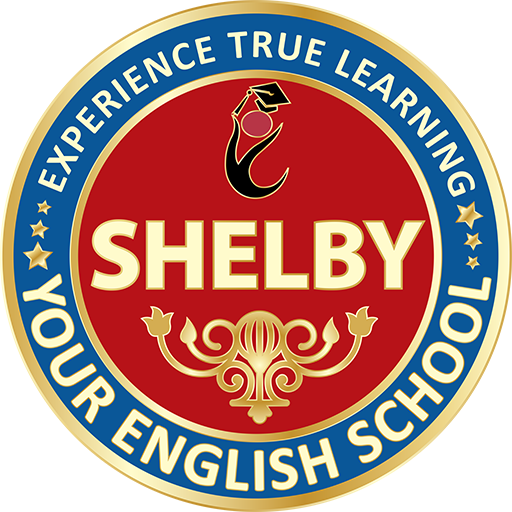5 Easy Steps to Give Clear Directions in English
5 Easy Steps to Give Clear Directions in English Giving clear directions in English is an essential skill. Whether you’re guiding someone through a busy city or helping a friend find a specific location, providing easy-to-understand instructions can make all the difference. In this blog, we will explore five easy steps to give clear directions in English. These tips will ensure that your listener can follow your instructions with ease, avoiding confusion. By keeping it simple and organized, you will be able to guide anyone efficiently, no matter where they are heading. Step 1: Use Simple Vocabulary When giving directions, using simple vocabulary is essential for clarity. Avoid overly complex words or jargon that may confuse the person you’re speaking to. Stick to basic, common words that are easily understood by everyone. For instance, instead of saying “proceed along the avenue,” simply say, “walk straight ahead.” This keeps your instructions direct and ensures that the listener does not get lost in the details. Simple words make it easier for someone to visualize and understand your instructions quickly. Why Simple Vocabulary is Important Simple vocabulary is crucial because it avoids misunderstandings. If the listener has to stop and figure out a word, they may miss important details. For example, replacing “navigate” with “go” or “turn” helps avoid confusion. It makes the directions feel more natural and less overwhelming. By speaking clearly and using familiar words, you make sure the listener follows your directions without hesitation. This ensures a smoother experience for everyone involved. How to Simplify Directions To simplify your directions, focus on key actions. Instead of using complex verbs, opt for basic ones. For example, “turn left” is better than saying “veer left.” Keep sentences short and to the point, as this helps reduce the chance of misunderstanding. Another helpful tip is to use landmarks when possible. For instance, saying “turn left at the library” is much clearer than simply saying “turn left at the next intersection.” Step 2: Break Directions into Clear Steps Breaking down directions into clear steps makes them easier to follow. When you give a long set of instructions at once, it can overwhelm the listener. However, when each instruction is given as a separate step, it is easier to absorb and follow. For example, instead of saying, “walk down the street, turn right at the second intersection, and then turn left after three blocks,” try dividing it into clear steps like: “Walk straight. Turn right at the second intersection. Turn left after three blocks.” Short, Clear Sentences Make a Difference Using short and clear sentences helps the listener keep track of each action. If your directions are long and complicated, they may forget important steps. Short sentences like “Turn right at the park” or “Walk for two blocks” are much more effective. These sentences make the directions more manageable, allowing the listener to follow one step at a time. A well-structured set of directions makes the journey ahead feel simpler and more organized. Use Numbers to Clarify the Steps Another way to make directions clearer is by numbering the steps. For example, “1. Walk straight ahead. 2. Turn left at the corner. 3. The library is on your right.” This method ensures that each part of the direction is clearly marked and easy to follow. Numbers can also help the listener keep track of where they are in the process. By numbering the steps, you give them a simple guide to help them feel confident in following your directions. Step 3: Include Landmarks for Easy Identification Landmarks are valuable when giving directions. These are visible, well-known features that can help guide the listener along their path. Instead of saying, “turn left at the next corner,” you could say, “turn left at the church.” This gives the listener a clear point of reference. By using familiar landmarks, you ensure that the directions are easier to follow. The presence of landmarks makes it much harder to get lost, as they serve as a visual cue. Why Landmarks Matter in Directions Including landmarks is essential for easy identification. It helps the listener recognize the right location more easily. For example, instead of saying “go past the traffic light,” you could say, “go past the bakery.” Landmarks are easily recognizable and prevent confusion. When a listener can see a familiar object, they know they are on the right track. This visual cue reduces the need for extra clarification. Examples of Landmarks Landmarks can be anything from schools and parks to well-known stores or buildings. For example, saying “turn left at Shelby Academy Medavakkam” gives clear direction because the person can identify the academy easily. It’s always a good idea to use prominent features like grocery stores, banks, or famous buildings. This makes it easier for anyone unfamiliar with the area to navigate without difficulty. Landmarks are key to providing effective directions. Step 4: Be Specific with Distance and Time Being specific with distance and time helps provide clarity. Instead of saying, “Go down the road a bit,” say, “Walk for 100 meters” or “Walk two blocks.” The more specific you are, the easier it is for the person to follow your directions. Providing an estimated time can also be helpful. For example, “It will take about five minutes to get there” gives the listener a clearer idea of what to expect. How to Specify Distance Instead of giving vague instructions like “keep walking,” specify how far the listener needs to go. For example, “Walk straight for 200 meters” gives a clear indication of distance. This helps the listener determine when to stop or turn. The more precise you are, the less likely the person will miss the correct turn. Always try to use clear, concrete measurements when possible, as this ensures smooth navigation. Use Time as a Guide Using time as a guide is helpful, especially if you don’t know the exact distance. For example, “It will take you about 10 minutes to get there” gives the listener
- Shelby Academy
- 0 Comments
- December 19, 2024
Essential English Phrases Every Traveler Needs to Know
Essential English Phrases Every Traveler Needs to Know Traveling can be exciting, but knowing the right English phrases makes your journey smoother. Whether you’re traveling for work or leisure, basic English phrases help you navigate new places confidently. From greetings to emergencies, these phrases cover essential interactions. Shelby Academy Medavakkam offers English courses that teach these travel essentials. Let’s explore useful phrases to help you communicate clearly and avoid misunderstandings. Knowing these phrases will enhance your travel experience and reduce stress. Practice them beforehand for a confident trip. Here are the phrases you need to know! Greetings and Introductions Starting with the right greeting sets the tone for a positive interaction. Whether you meet a stranger, ask for help, or introduce yourself, polite greetings are essential. Simple phrases like “Hello” and “Good morning” work in most situations. Introducing yourself with “My name is…” is useful for first meetings. Saying “Nice to meet you” adds friendliness. Shelby Academy Medavakkam teaches such basics for smooth conversations. Practicing these will make you sound polite and confident. Proper introductions create lasting first impressions. Common Greeting Phrases Polite greetings help you start conversations confidently. “Hello” and “Good morning” are appropriate at any time of day. “How are you?” is a common way to show interest. Saying “Nice to meet you” is polite when meeting someone for the first time. These simple phrases are used in many travel situations. At Shelby Academy Medavakkam, learners practice these phrases for fluency. Repeating these phrases often helps build confidence. Good greetings make your interactions pleasant and smooth. Introducing Yourself Introducing yourself helps start conversations with ease. Use “My name is…” to share your name politely. “I’m from…” lets others know your country of origin. Tourists often say, “I’m a traveler” to explain their purpose. Practicing these phrases at Shelby Academy Medavakkam boosts your confidence. These simple introductions make interactions smoother. Using these phrases helps you connect easily with people. Being polite makes travel more enjoyable. Asking for Directions When you’re in a new city, you may need to ask for directions. Knowing how to ask politely can make your travel easier. Phrases like “Excuse me, where is the nearest hotel?” are useful. Asking “How do I get to the airport?” helps when you need clear directions. Shelby Academy Medavakkam teaches these travel phrases for confident communication. Knowing these phrases helps you avoid confusion. They also make you feel more independent. Practice them to travel without worries. Phrases to Ask for Directions Use simple phrases to ask for directions confidently. “Excuse me, where is the nearest bus stop?” is a common question. Asking “Is it far from here?” helps when you need distance details. “Can you show me on the map?” helps with visual directions. These phrases are taught effectively at Shelby Academy Medavakkam. Practicing them helps you avoid getting lost. Asking for directions becomes easier with practice. Travelers feel confident with these useful phrases. Understanding Directions Understanding directions helps you follow instructions clearly. Common phrases like “Go straight” mean to continue forward. “Turn left” or “Turn right” helps you know which way to go. If someone says, “It’s on the corner,” it means a place is at an intersection. Shelby Academy Medavakkam helps learners understand these directions. These phrases make navigation easier. Clear directions save time and reduce stress. Mastering them makes travel more enjoyable. Ordering Food and Drinks Ordering food is a common travel activity. Knowing key phrases helps you enjoy meals without confusion. Saying “I’d like a coffee, please” is polite and simple. “Can I see the menu?” is useful before deciding what to order. At Shelby Academy Medavakkam, learners practice these essential phrases. Knowing these phrases helps you feel confident in restaurants. It ensures your preferences are understood. Good communication enhances your dining experience. Phrases for Ordering Ordering is simple with a few polite phrases. “I’d like a sandwich, please” works in most places. Asking “Can I see the menu?” helps before ordering. “Could I get the bill?” helps when you’re ready to pay. Shelby Academy Medavakkam trains learners to use these confidently. These phrases ensure smooth communication in restaurants. Practicing them helps you avoid confusion. Good ordering skills make dining stress-free. Asking About Food Options Knowing how to ask about food preferences is useful. Questions like “Is this vegetarian?” help ensure your meal suits your needs. Asking “Does this have nuts?” is important for allergies. “What do you recommend?” helps when you need suggestions. Shelby Academy Medavakkam emphasizes these phrases in lessons. Knowing these ensures you get the meal you want. Practicing these questions makes dining safer and easier. Confidence in ordering improves your travel experience. Shopping and Bargaining Shopping in a foreign country can be fun if you know the right phrases. Asking “How much does this cost?” helps you get started. When shopping for clothes, asking “Do you have this in another size?” is useful. Shelby Academy Medavakkam covers these essential phrases for travelers. They help you communicate clearly and confidently. Knowing these phrases improves your shopping experience. Bargaining becomes easier with practice. Confident communication helps you shop stress-free. Phrases for Shopping Basic phrases make shopping easier. Asking “How much does this cost?” helps you know the price. “Do you have this in a different color?” is helpful for options. Saying “I’ll take this, please” finalizes your purchase. At Shelby Academy Medavakkam, learners practice these phrases for fluency. Knowing these phrases ensures smooth shopping. Practice them to shop confidently. Shopping becomes fun and easy with these phrases. Negotiating Prices Bargaining is common in many places. Asking “Can you give me a discount?” helps you save money. “Is this your best price?” encourages a better deal. “I’m looking for something cheaper” shows you’re open to options. These phrases are taught at Shelby Academy Medavakkam. Practicing them helps you negotiate confidently. Knowing these phrases improves your bargaining skills. Smart negotiation saves you money while shopping. Conclusion Mastering essential English phrases can significantly enhance your travel experience. Whether you’re greeting someone, asking for directions, ordering
- Shelby Academy
- 0 Comments
- December 17, 2024


